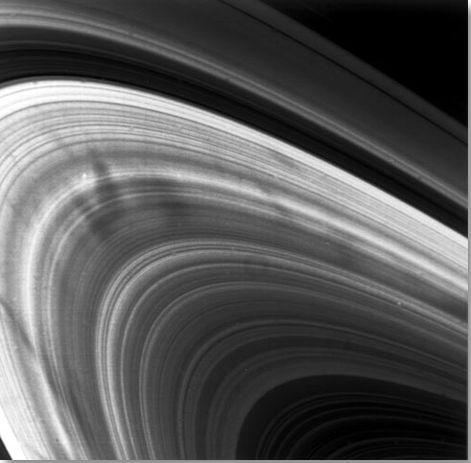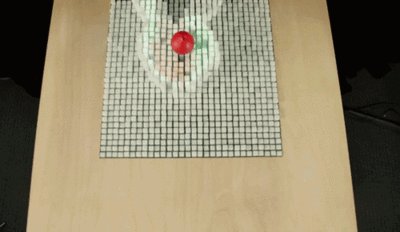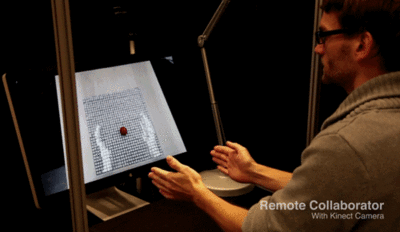What’s Encrypting Your Internet Surfing? An Algorithm Created By A Supercomputer? Well, If The Site

What’s encrypting your internet surfing? An algorithm created by a supercomputer? Well, if the site you’re visiting is encrypted by the cyber security firm Cloudflare, your activity may be protected by a wall of lava lamps.

Cloudflare covers websites for Uber, OKCupid, & FitBit, for instance. The wall of lamps in the San Francisco headquarters generates a random code. Over 100 lamps, in a variety of colors, and their patterns deter hackers from accessing data.

As the lava lamps bubble and swirl, a video camera on the ceiling monitors their unpredictable changes and connects the footage to a computer, which converts the randomness into a virtually unhackable code.

Codes created by machines have relatively predictable patterns, so it’s possible for hackers to guess their algorithms, posing a security risk. Lava lamps, add to the equation the sheer randomness of the physical world, making it nearly impossible for hackers to break through.

You might think that this would be kept secret, but it’s not. Simply go in and ask to see the lava lamp display. By allowing people to affect the video footage, human movement, static, and changes in lighting from the windows work together to make the random code even harder to predict.

So, by standing in front of the display, you add an additional variable to the code, making it even harder to hack. Isn’t that interesting?
via atlasobscura.com
More Posts from Jupyterjones and Others
Cassini Spacecraft: Top Discoveries
Our Cassini spacecraft has been exploring Saturn, its stunning rings and its strange and beautiful moons for more than a decade.

Having expended almost every bit of the rocket propellant it carried to Saturn, operators are deliberately plunging Cassini into the planet to ensure Saturn’s moons will remain pristine for future exploration – in particular, the ice-covered, ocean-bearing moon Enceladus, but also Titan, with its intriguing pre-biotic chemistry.
Let’s take a look back at some of Cassini’s top discoveries:
Titan

Under its shroud of haze, Saturn’s planet-sized moon Titan hides dunes, mountains of water ice and rivers and seas of liquid methane. Of the hundreds of moons in our solar system, Titan is the only one with a dense atmosphere and large liquid reservoirs on its surface, making it in some ways more like a terrestrial planet.

Both Earth and Titan have nitrogen-dominated atmospheres – over 95% nitrogen in Titan’s case. However, unlike Earth, Titan has very little oxygen; the rest of the atmosphere is mostly methane and traced amounts of other gases, including ethane.

There are three large seas, all located close to the moon’s north pole, surrounded by numerous smaller lakes in the northern hemisphere. Just one large lake has been found in the southern hemisphere.
Enceladus

The moon Enceladus conceals a global ocean of salty liquid water beneath its icy surface. Some of that water even shoots out into space, creating an immense plume!

For decades, scientists didn’t know why Enceladus was the brightest world in the solar system, or how it related to Saturn’s E ring. Cassini found that both the fresh coating on its surface, and icy material in the E ring originate from vents connected to a global subsurface saltwater ocean that might host hydrothermal vents.

With its global ocean, unique chemistry and internal heat, Enceladus has become a promising lead in our search for worlds where life could exist.
Iapetus

Saturn’s two-toned moon Iapetus gets its odd coloring from reddish dust in its orbital path that is swept up and lands on the leading face of the moon.

The most unique, and perhaps most remarkable feature discovered on Iapetus in Cassini images is a topographic ridge that coincides almost exactly with the geographic equator. The physical origin of the ridge has yet to be explained…

It is not yet year whether the ridge is a mountain belt that has folded upward, or an extensional crack in the surface through which material from inside Iapetus erupted onto the surface and accumulated locally.
Saturn’s Rings

Saturn’s rings are made of countless particles of ice and dust, which Saturn’s moons push and tug, creating gaps and waves.

Scientists have never before studied the size, temperature, composition and distribution of Saturn’s rings from Saturn obit. Cassini has captured extraordinary ring-moon interactions, observed the lowest ring-temperature ever recorded at Saturn, discovered that the moon Enceladus is the source for Saturn’s E ring, and viewed the rings at equinox when sunlight strikes the rings edge-on, revealing never-before-seen ring features and details.

Cassini also studied features in Saturn’s rings called “spokes,” which can be longer than the diameter of Earth. Scientists think they’re made of thin icy particles that are lifted by an electrostatic charge and only last a few hours.
Auroras

The powerful magnetic field that permeates Saturn is strange because it lines up with the planet’s poles. But just like Earth’s field, it all creates shimmering auroras.

Auroras on Saturn occur in a process similar to Earth’s northern and southern lights. Particles from the solar wind are channeled by Saturn’s magnetic field toward the planet’s poles, where they interact with electrically charged gas (plasma) in the upper atmosphere and emit light.
Turbulent Atmosphere

Saturn’s turbulent atmosphere churns with immense storms and a striking, six-sided jet stream near its north pole.

Saturn’s north and south poles are also each beautifully (and violently) decorated by a colossal swirling storm. Cassini got an up-close look at the north polar storm and scientists found that the storm’s eye was about 50 times wider than an Earth hurricane’s eye.

Unlike the Earth hurricanes that are driven by warm ocean waters, Saturn’s polar vortexes aren’t actually hurricanes. They’re hurricane-like though, and even contain lightning. Cassini’s instruments have ‘heard’ lightning ever since entering Saturn orbit in 2004, in the form of radio waves. But it wasn’t until 2009 that Cassini’s cameras captured images of Saturnian lighting for the first time.

Cassini scientists assembled a short video of it, the first video of lightning discharging on a planet other than Earth.

Cassini’s adventure will end soon because it’s almost out of fuel. So to avoid possibly ever contaminating moons like Enceladus or Titan, on Sept. 15 it will intentionally dive into Saturn’s atmosphere.

The spacecraft is expected to lose radio contact with Earth within about one to two minutes after beginning its decent into Saturn’s upper atmosphere. But on the way down, before contact is lost, eight of Cassini’s 12 science instruments will be operating! More details on the spacecraft’s final decent can be found HERE.
Make sure to follow us on Tumblr for your regular dose of space: http://nasa.tumblr.com




Raspberry Multiverse
Stephen Hawking’s Grand design is leading to a non symmetric multiverse. However there is reason to suggest a full symmetric multiverse with point symmetry at the centre of a raspberry shaped pulsating bubble multiverse. For an entangled multiverse, each quantum should have its own 12 fold entanglement relation to all 12 opposite (anti) quantums, each located inside one of the 12 universes. The result is called: Poincaré dodecahedral space symmetry. (see also below: B.F.Roukema) A dodecahedron is also called “Buckyball” An other evidence for space symmetry and the centre of the multiverse is the so called DARK FLOW. Dark flow seems to be found at the edge of the visible universe!! There the “dark flow centre is represented by a so called "Pitch of spacetime”

That’s the secret of programming.


























Jupiter’s Great Red Spot
Jupiter’s Great Red Spot (GRS) is an atmospheric storm that has been raging in Jupiter’s southern Hemisphere for at least 400 years.
About 100 years ago, the storm covered over 40,000 km of the surface. It is currently about one half of that size and seems to be shrinking.
At the present rate that it is shrinking it could become circular by 2040. The GRS rotates counter-clockwise(anti-cyclonic) and makes a full rotation every six Earth days.
It is not known exactly what causes the Great Red Spot’s reddish color. The most popular theory, which is supported by laboratory experiments, holds that the color may be caused by complex organic molecules, red phosphorus, or other sulfur compounds.
The GRS is about two to three times larger than Earth. Winds at its oval edges can reach up to 425 mph (680 km/h)
Infrared data has indicated that the Great Red Spot is colder (and thus, higher in altitude) than most of the other clouds on the planet
Sources: http://www.universetoday.com/15163/jupiters-great-red-spot/ http://www.space.com/23708-jupiter-great-red-spot-longevity.html


#beingacomputerprogrammingmajor : Testing out html scripts on Pokemon Go and finding out it actually works.
I got a migraine and threw up because of this



-
 agentukelele liked this · 4 days ago
agentukelele liked this · 4 days ago -
 shadowoflightt reblogged this · 6 days ago
shadowoflightt reblogged this · 6 days ago -
 shadowoflightt liked this · 6 days ago
shadowoflightt liked this · 6 days ago -
 itrymyworst reblogged this · 3 weeks ago
itrymyworst reblogged this · 3 weeks ago -
 musiczodiacmystery reblogged this · 2 months ago
musiczodiacmystery reblogged this · 2 months ago -
 musiczodiacmystery liked this · 2 months ago
musiczodiacmystery liked this · 2 months ago -
 wyst-ar reblogged this · 2 months ago
wyst-ar reblogged this · 2 months ago -
 wyst-ar liked this · 2 months ago
wyst-ar liked this · 2 months ago -
 manga-wolfsengel reblogged this · 2 months ago
manga-wolfsengel reblogged this · 2 months ago -
 iamafireplace liked this · 2 months ago
iamafireplace liked this · 2 months ago -
 abundantm liked this · 2 months ago
abundantm liked this · 2 months ago -
 sad-angry-dilfs reblogged this · 2 months ago
sad-angry-dilfs reblogged this · 2 months ago -
 sad-angry-dilfs liked this · 2 months ago
sad-angry-dilfs liked this · 2 months ago -
 deelgathor reblogged this · 2 months ago
deelgathor reblogged this · 2 months ago -
 meridianowl reblogged this · 2 months ago
meridianowl reblogged this · 2 months ago -
 meridianowl liked this · 2 months ago
meridianowl liked this · 2 months ago -
 wildwulfus liked this · 2 months ago
wildwulfus liked this · 2 months ago -
 forbidden-cookie liked this · 3 months ago
forbidden-cookie liked this · 3 months ago -
 flufybunnybottoms reblogged this · 3 months ago
flufybunnybottoms reblogged this · 3 months ago -
 flufybunnybottoms liked this · 3 months ago
flufybunnybottoms liked this · 3 months ago -
 fail-sage liked this · 3 months ago
fail-sage liked this · 3 months ago -
 croissantcoffin liked this · 3 months ago
croissantcoffin liked this · 3 months ago -
 cherries-are-valid liked this · 3 months ago
cherries-are-valid liked this · 3 months ago -
 introvertedfangrl liked this · 3 months ago
introvertedfangrl liked this · 3 months ago -
 cherrypikkins reblogged this · 3 months ago
cherrypikkins reblogged this · 3 months ago -
 jinkisaragi liked this · 4 months ago
jinkisaragi liked this · 4 months ago -
 5920000264-blog liked this · 4 months ago
5920000264-blog liked this · 4 months ago -
 hellrefs reblogged this · 5 months ago
hellrefs reblogged this · 5 months ago -
 klatchianmist reblogged this · 5 months ago
klatchianmist reblogged this · 5 months ago -
 annavn3av liked this · 5 months ago
annavn3av liked this · 5 months ago -
 anna17cbm liked this · 5 months ago
anna17cbm liked this · 5 months ago -
 bagellu reblogged this · 6 months ago
bagellu reblogged this · 6 months ago -
 bagellu liked this · 6 months ago
bagellu liked this · 6 months ago -
 ozzkers reblogged this · 6 months ago
ozzkers reblogged this · 6 months ago -
 croissantcoffin reblogged this · 7 months ago
croissantcoffin reblogged this · 7 months ago -
 zzzevrann reblogged this · 7 months ago
zzzevrann reblogged this · 7 months ago -
 wrenanigans liked this · 7 months ago
wrenanigans liked this · 7 months ago -
 bestwishes2u reblogged this · 7 months ago
bestwishes2u reblogged this · 7 months ago -
 bocchithereal liked this · 7 months ago
bocchithereal liked this · 7 months ago -
 toku-fangirl-2015 liked this · 7 months ago
toku-fangirl-2015 liked this · 7 months ago -
 thesaltypotoo liked this · 7 months ago
thesaltypotoo liked this · 7 months ago -
 eirasummers reblogged this · 7 months ago
eirasummers reblogged this · 7 months ago -
 en-busca-de-mi-ikigai-blog liked this · 7 months ago
en-busca-de-mi-ikigai-blog liked this · 7 months ago -
 kepesktribe liked this · 7 months ago
kepesktribe liked this · 7 months ago -
 batboysandgirls liked this · 7 months ago
batboysandgirls liked this · 7 months ago -
 aoffnis reblogged this · 7 months ago
aoffnis reblogged this · 7 months ago



